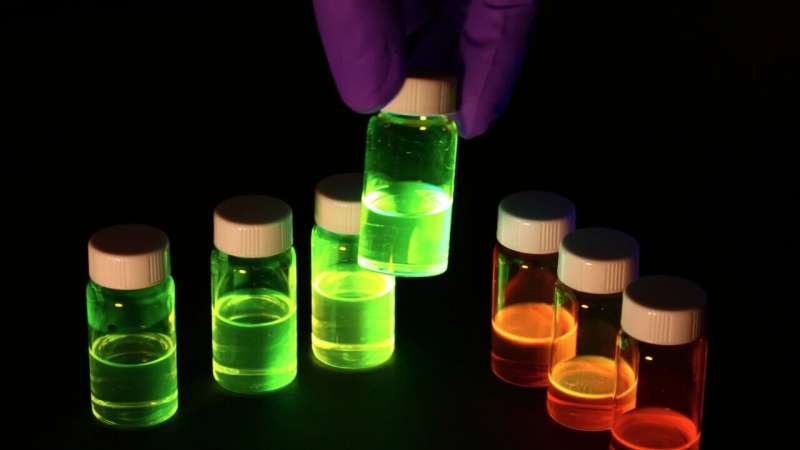Finding green solvents for printed electronics

The emerging field of printed electronics promises to radically change the way we view and use electronics through energy- and cost-efficient printing of electronic inks onto everyday surfaces such as paper and textiles. However, a severe problem from a sustainability perspective is that many current inks used during the printing include solvents that are unsafe and damaging for both workers and the environment.
In order to address this challenge, Dr. Christian Larsen and Prof. Ludvig Edman together with colleagues at the Department of Physics at Umeå University have developed an open web tool for the facile identification of green solvents for sustainable printed electronics. The Green Solvent Selection Tool is openly available through the internet.
"Printed electronics will change the way we view and use electronics in the future. You will be able to add functionalities, such as sensors, solar cells, displays and illumination panels, onto a variety of common and functional surfaces by affordable printing processes. You can imagine clothes that lights up and makes you visible when it is dark, ultrathin illumination panels that are painted onto the walls and ceiling, and flexible and lightweight solar panels that provide electricity when you are out on adventures. The potential applications are near endless," says Christian Larsen, senior research engineer at the Department of Physics at Umeå University.
The printing fabrication is performed by sequential deposition of specifically designed inks, which contain the active material dissolved or dispersed in a liquid solvent. The solvent is highly important in that it determines the quality of the ink and the final device. After each printing step, the solvent is removed by evaporation, and thereby exposed to the workers and the surrounding environment. A severe problem is that many of the current solvents in printed electronics are non-sustainable in that they bring health issues, safety risks, and environmental hazards.
"Therefore, we have developed an open web tool for the straightforward identification of alternative functional and green solvents, which in essence combines the 'like-dissolves-like' approach for solvent functionality with a well-established ranking for solvent sustainability or "greenness."
More information: Christian Larsen et al, A tool for identifying green solvents for printed electronics, Nature Communications (2021). DOI: 10.1038/s41467-021-24761-x
Journal information: Nature Communications
Provided by Umea University





















